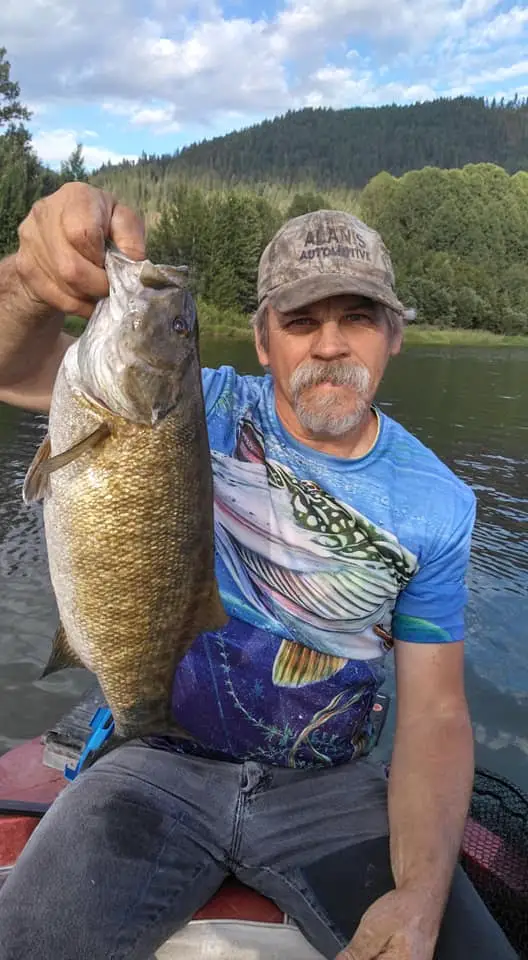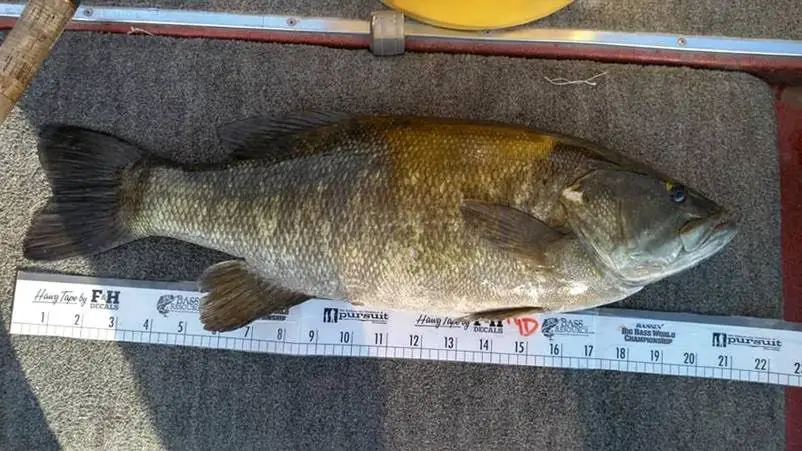Search
Latest Articles
Chasing Summer Smallies
by Rick Lawrence, July 07, 2019
Chances are there's some good summertime smallmouth bass fishing in a flowing body of water near you. Here are some ways of catching those bronze backs during the summer and early fall. The main thing you want to look for in catching Smallies this time of year is currant breaks or eddies, where fast and calm waters meet. Put that together with a few of the presentations below and you will put more summer Smallies in your boat.
Fish Tubes
If there’s one lure that consistently catches smallmouth bass anywhere you go. It’s a tube! It’s not new and sexy like the Spybait, it’s ugly and it’s been around for a LONG time. Why is it so successful? It closely mimics many of their favorite treats, whether that be crayfish, or sculpins.
There are two primary old ways to fish tubes:
- A standard internally weighed tube (which is most popular)
- One a mushroom head jig with an exposed hook.
But there is a new way that becoming very popular and that’s the Zeka Rig.
This consists of a EWG hook to match the size of tube used, a small split ring and a long skinny drop shot type weight. The tube is Texas rigged making it almost a snag proof and weedless presentation. This new technique has taken the bass fishing world by storm in the last few years.
The correct weight you need for any of these methods depends on the amount or current and depth of water you’re fishing. Carry weights from 1/16 oz all the way up to 1/2 oz, and you’ll be prepared for fishing anywhere from 2 feet of water to 30+ feet.
Probably the most important thing with fishing a tube is presenting it effectively to the fish. What that means for tube fishermen is keeping the bait on the bottom or as close to the bottom as possible without getting snagged every cast.
There are three primary retrieves you can employ with tube fishing:
1. Bottom hopping
2. Slow dragging
3. Slow drag with a rip
If you’re in the store looking to stock up on some tubes, you’ll quickly find that you have a LOT of options. While brand choice is up to you, I can make some recommendations on size. Most fishermen like using three inch baits, but we would suggest trying out the smaller two inch models. I use all three sizes, but when the bite gets ultra tough, we like to bust out the two incher for more of a finesse look. And as the old saying goes, any color works great as long as it’s green pumpkin…
Fish Jerkbaits
In the warmer waters of the summer, river bass are accustomed to chasing down their meals. Anglers reap the benefit of being able to catch them using a moving lure, as opposed to fishing one that must be worked more slowly along the bottom. Often the most effective moving lures are ones that are fished in a jerky spot-and-go manner.
Jerkbaits exist in both hard and soft versions. Though each has a place in summertime river bass fishing, I've found the hard jerkbait to be the go-to choice most of the time.
Hard jerkbaits like the Rapala X-Rap and Lucky Craft's Pointer have the ability to attract the bass's attention, but my favorite in the last few years has been the Strike King KVD Jerkbait in the Chrome Sexy Shad. The secret in working jerkbaits in the summer is to really work it. Impart aggressive, hard jerks, and stop the bait for just second. I like to use a MH 6 ½ to 7 ft spinning rod with 20 lb Suffix braid and a 4 foot 10 lb fluoro leader for working all my Jerkbaits.
Also try a weedless soft jerkbait like the Zoom Fluke when weeds are present, and come close to the surface. You can't work the soft jerkbait as aggressively — it will just skip across the surface — but that's not necessary. Bass hiding in weed depressions are often actively feeding and don't need to be teased into biting; they simply rise up and intercept the lure as it comes by.
Go Out in the Rain
Some of the most productive summertime river bass fishing happens during those rainy, summertime days, the ones where it never really pours, but the rain gear stays on all day. It's the kind of day many folks shy away from, waiting instead for "better" weather. As with the fog pattern, the lower light intensity of such conditions seems to allow bass to feed more efficiently.
One area that consistently produces bass for me during rainy summertime days, during ones where the water is still low and clear is the tail-out section of a major river hole. The tail-out is the transition zone, where the pool shallows up before it spills into a riffle area, and it's a classic feeding spot. The best depths to fish feeding fish is from 3 to 6 feet; the best tail-out areas feature a combination of rocks or logs and aquatic vegatation, places that provide good ambush points. Bass use tail-outs during twilight feeding periods. During rainy days often they stay there all day long.
Get on the Water Early or Stay Late
Like all bass Smallmouth are the most active in low light conditions. So fishing that evening bite or in early morning the river valleys often fill in with fog, a cloak that during the morning hours temporarily shields the water from the burning rays of the sun. Coupled with the action provided by the natural feeding activity of the morning hours, it pays to be on the water at the crack of dawn. Don’t forget about topwater lures in those early morning hours as it can be deadly on Smallies. Baits like Whooper ploppers, Poppers, Spooks and buzzbaits all are summertime favorites.
Though there's not always a hot, early- to mid-morning "fog bite," the majority of the time there is. Just be prepared to have things slow down appreciably when the fog burns off. Often it's like having a switch thrown to the off position. The bass aggressively feed during the low-light period of early morning — conditions that give them an advantage over their prey — and the light-dampening effect of the fog extends that period. Happily, this shut-down period usually only lasts for a couple of hours. The water is warm, bass metabolism is high, so they must feed. During a typical sunny summertime day the fish get more active by early afternoon and that’s when I get out my jerkbaits.
If there is one fish I love catching it’s a Smallmouth. Pound for pound they are one of the hardest fighting fish that swims and one of the most fun to catch. So go find a river near you and put a few of these Bronze Beauties in your boat.

